Food Wine White
Bodega Chacra Chardonnay Patagonia 2018
Bodega Chacra Chardonnay Patagonia 2018
Done in collaboration with Jean-Marc Roulot, is produced from 40 year old vines in mineral soils with alluvial stones covered in calcaire. The wine is intense and energetic, high pitched and lively, round and austere, refined and mineral. It has a dry mouthfeel and a saltiness natural to the area.
100% Chardonnay
Aged: 20% in concrete eggs, 15% in stainless steel tanks and 20% in used French oak barrels for 10 months
HISTORY AND GEOLOGY OF MAINQUÉ
The Río Negro originates from the junction of two meltwater rivers, Limay and Neuquén, and then crosses the stepped plains of the province through a forest about 3 kilometers (1.9 mi) long at the Alto Valle, a 75-mile-long, 5-mile-wide stretch along the river. The elevation at the valley is between 290 meters (952ft.) and 330 meters above sea level.
In the 1820s, British colonists dug irrigation channels on both sides of the river, forming a green belt suitable for agriculture. Soils at the river banks are mainly acidic, sandy loams and silty loams, while in the dry plain, extensive gravel mantels known as ‘Rodados Patagónicos’ or ‘Patagonian Shingle Formation’ can be found.
A high iron concentration before the Río Negro produces heavy red clay soils in the “Mainqué” area. Another part of the estate is encompassed by “barda” soils: eroded steep slopes with scarce vegetation.
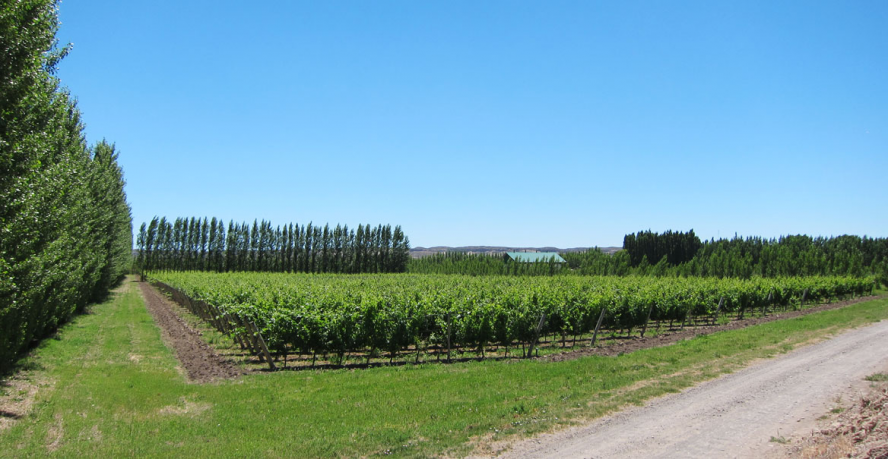
CLIMATE
Winds are mainly from the southeast quadrant. They grow cold in winter, reaching -5°C (23°F) due to the snow that covers the Andes, but become less cold the rest of the year, with temperatures ranging from 10°C (50°F) to 35°C (95°F). In addition, these winds are characteristically dry in the region, as the uplift of air masses through the Andes produces
precipitation, eliminating the humidity swept along from the Pacific. The rain shadow effect and descending cool mountain air make the desert quite windy as well; gusts of wind can reach 44mph. Poor precipitations also contribute to aridity: averages of annual rainfall in the area range from 150mm (5.9 in) to 200 mm (7.88in) per year.
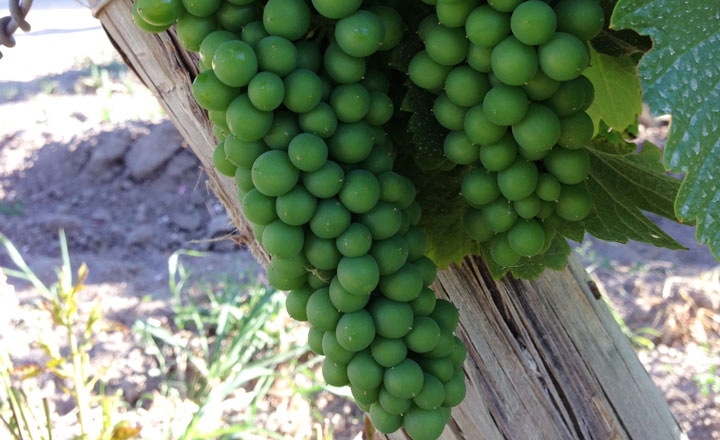
As a result, soil genetic horizons are quite drained and have poor organic matter, but these conditions contribute to the health of the crops in the High Valley, while growers are able to control the water intake through irrigation.
Classic desert conditions of warm days and cold nights extend the growing season and slow the ripening of grapes. The combination of high winds, constant sun, little rainfall, and alluvial soils tend to yield smaller and thicker grapes, leading to high concentrations of sugar and natural acidity.

TERROIR & VINEYARDS
Río Negro is a a surprisingly perfect spot for Pinot Noir. Smack in the middle of Patagonia, temperatures are high at times; but the strong winds coming down the Andes cool the vines. Night temperatures drop by as much as 40 degrees preserving the vital acidity and floral qualities that make great Pinot Noir.
Soils are mainly acidic, sandy loams and silty loams, while in the dry plain, extensive gravel mantels known as ‘Rodados Patagónicos’ or ‘Patagonian Shingle Formation’ can be found. A high iron concentration before the Río Negro produces heavy red clay soils in the “Mainqué” area.
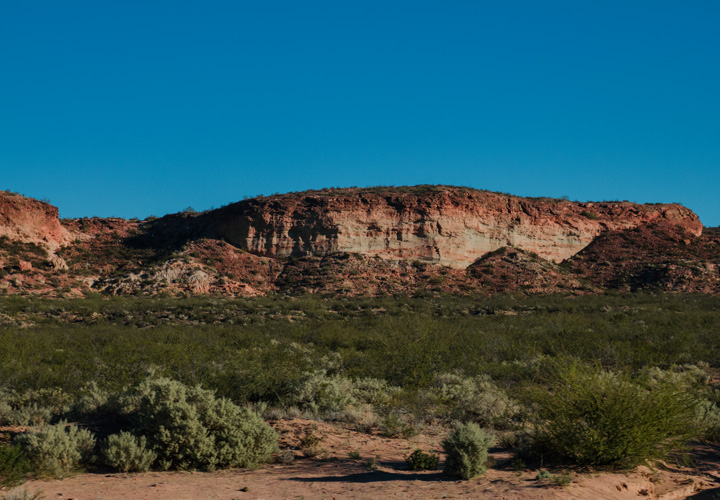
Another part of the estate is encompassed by “barda” soils: eroded steep slopes with scarce vegetation. These conditions contribute to the health of the crops in the High Valley, while growers are able to control the water intake through irrigation channels, which were created by British colonists in the 1820s. In addition, low humidity in the air eliminates the possibility of mold and other diseases.
While it is true that other systems with newer technologies exist, these ancient plants have grown used to the flood irrigation system for years. In addition, flooding helps to prevent many plant diseases including phylloxera.
The Vineyards
Chacra advocates for the highest quality and originality of its wines. The reason these standards are achieved lies in the way its old, ungrafted vineyards are treated organically and biodynamically in a habitat where respect for nature and the deepest engagement in understanding the environment are passionately pursued.
Chacra is comprised of 24 planted hectares: three planted in 1932, 7 planted in 1955, and the remaining planted on an average of 20 years ago
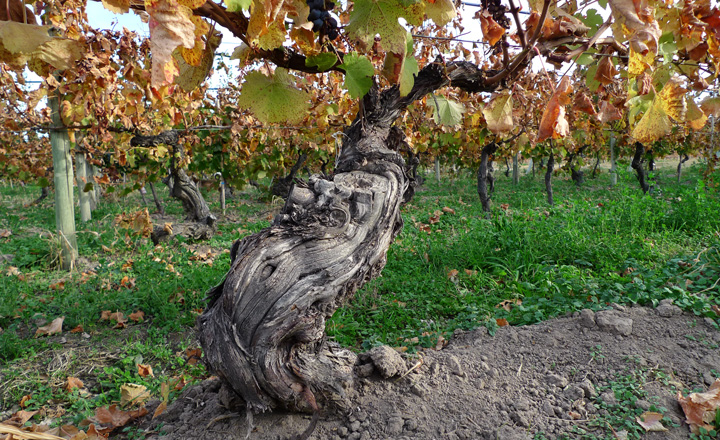
Pinot Noir
Also known as red Burgundy, as it originates from the area which breeds several wines of the highest quality, Pinot Noir is an endless road for the consumer. The austerity and thorough complexity of its character make this one of the most elegant varieties in the world with rose petal, mushroom, forest floor, and earthy aromas when it unfolds and plenty with cherry and strawberry aromas in its youth.
Possibly the most complex grape variety to cultivate, Pinot’s fine skin and compact bunches make it a true challenge for viticulturists. In addition, weather conditions of the vineyards must be materially precise to deliver high-quality products.
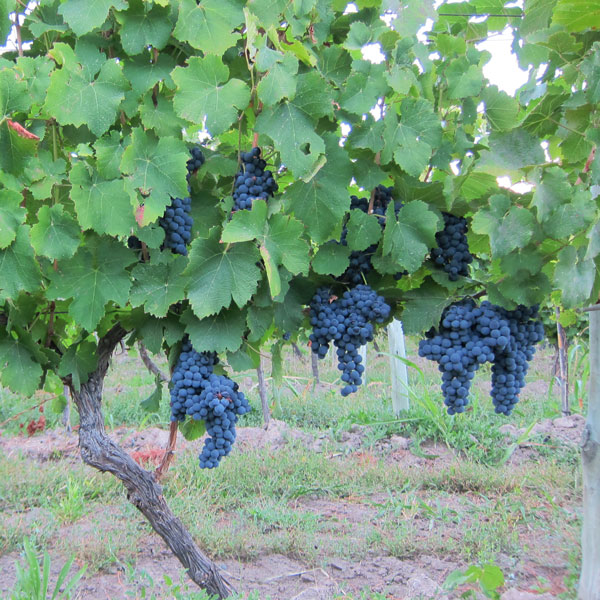
The varietal composition of Chacra vineyards consists solely of pinot noir. This variety, delicate and fascinating, finds ideal weather in the region. The low humidity and constant winds protect the vineyards from hostilities while the constant sun, low rainfall and alluvial soils are virtually unmatched in any other wine-making region in the world.
Pinot has the ability to transform itself in very little time, developing unique and novel qualities in only a few years. This is written on the resulting singular and genuine character of each specimen in the world. This is why behind every glass of Pinot Noir there is a deep and complex story to tell.
